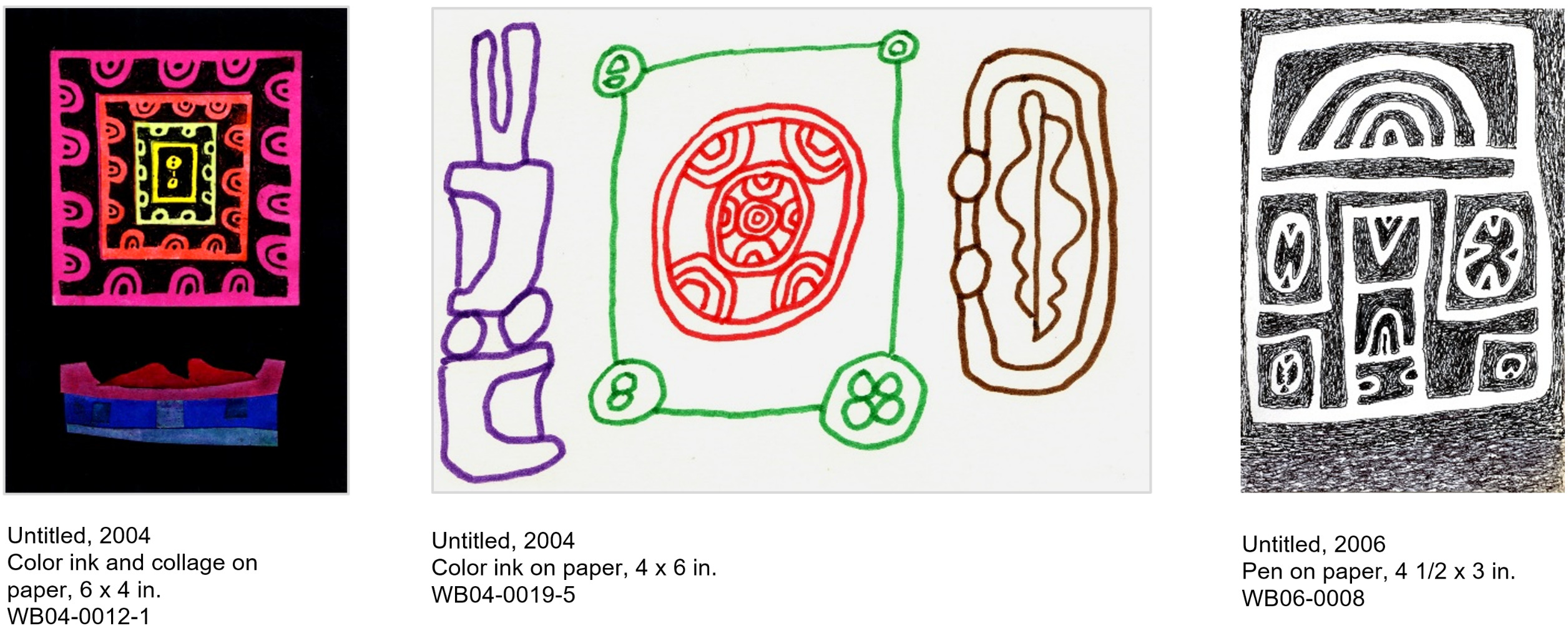Brice’s Remarkable Notations
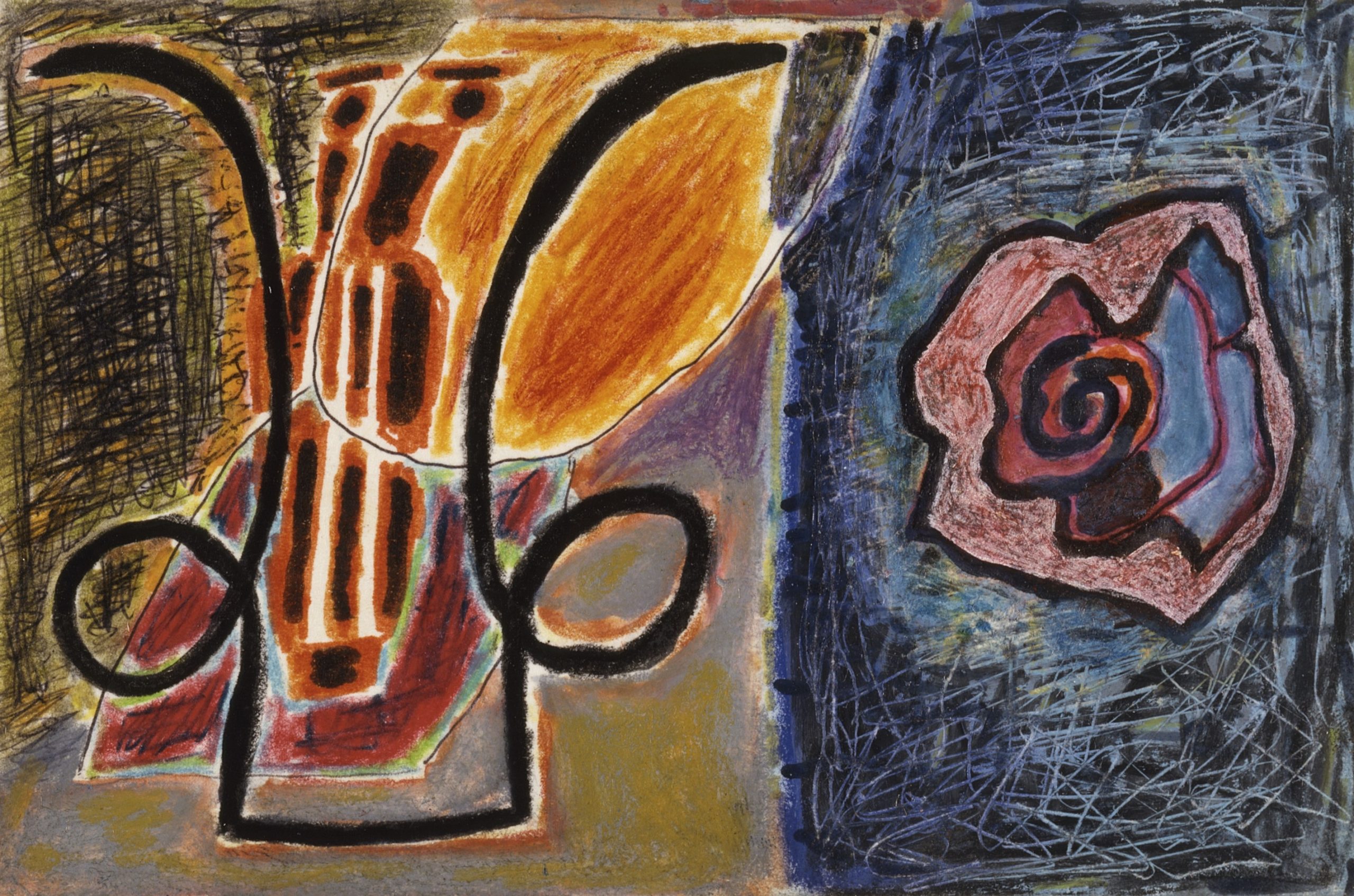
What I have loved about drawing is its non-complicated nature as far as process. It’s not high-tech at all. As a matter of fact, you all have a pencil, you all have a paper, you’ve got a match, you light the match, you draw on your palm. I mean, it’s that direct. And sort of mind, head, hand. Very quick. And the realization immediate. And it’s not developed. A few lines, a notation and just a passing thought, something.
And the reason I think it’s important to do it even though I take photographs of things too, is the photograph will bring me back to the thing that I was interested in, that subject, will not put me in touch in the same way. If I make four marks, I can remember that. I can read my excitement in the marks. I can read my feeling about how I felt about it. Not just what it was, but a little of how I felt about it. And then maybe I can go on from there. And that’s something about the drawing.
William Brice,
MOCA Mid-Career Retrospective Walkthrough
1986
Stumbling into Notation Making
Before the advent of now-ubiquitous iPhones and iPads with apps that let users like David Hockney make digital drawings, Brice made sketches not much bigger than today’s smartphones, drawn originally on blue or buff-colored, blank-fronted postcards with pen, colored felt tip pens, pencil, ink, etc.
The origin of Brice’s sketch notes began in 1968 during his six-month sojourn to live and paint in London. There he drew cartoons of his and his family’s minor exploits on blank-fronted postcards which he then sent to entertain friends and family back home.
Greece and the Advent of Brice’s Mature Period

Brice racing over ruins with camera at the ready, Greece, 1970
Two years later during his first Greek odyssey to the Cycladic Islands, Brice resumed this habit and more.
While snapping hundreds of photographs of what intrigued him, he began carrying similar blank-fronted postcards but now to make quick sketches to “remember” his feelings over what excited him.
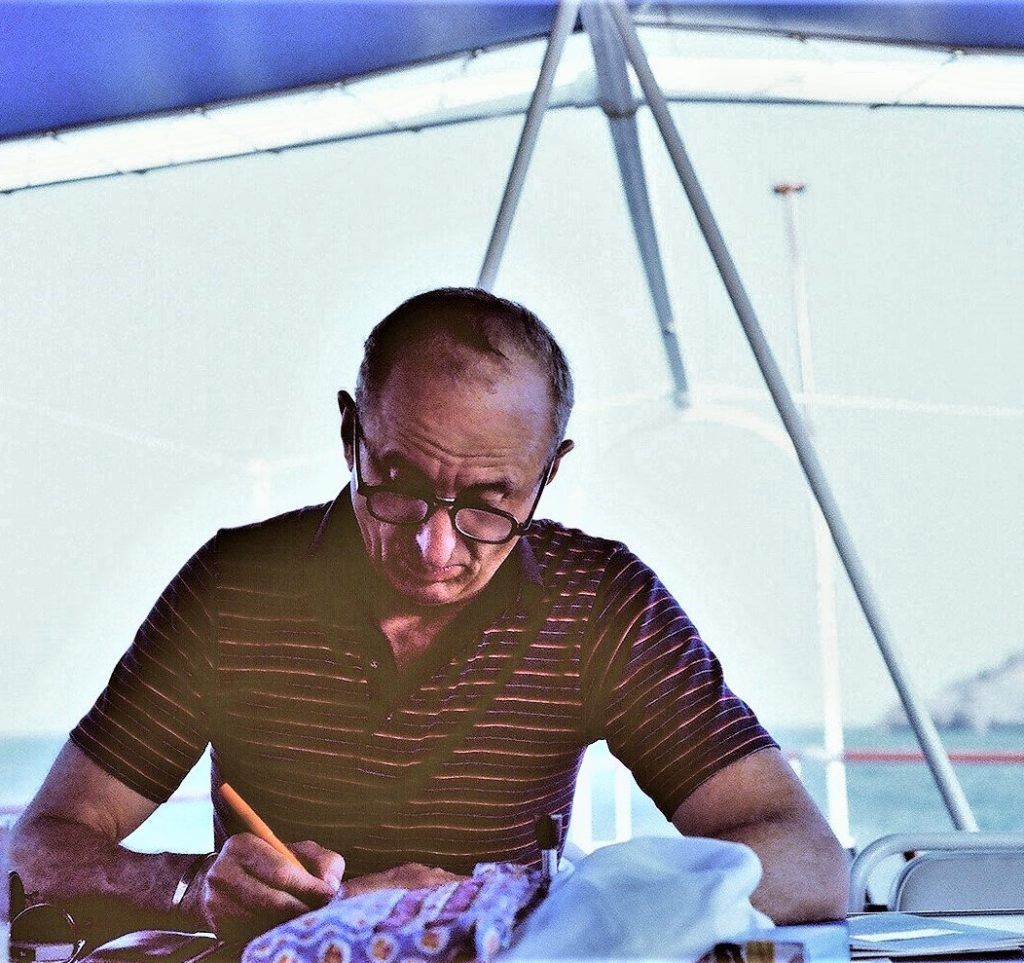
Brice drawing sketch notes to self aboard My Daphni, on Brice’s second Greek voyage, 1979.
Back shipboard, Brice continued sketching notes of the unique Greek nature, light, and artifacts he had just experienced while they were still fresh in his mind, refining and exploring what he had found so compelling.
On his return to Los Angeles, Brice continued the practice of making sketch notes both at home and in his studio. Their simple, small format made them effortless; just doodles.
This casual approach to image-making allowed Brice to be spontaneous and to freely experiment—without a sense of preciousness or self-conscientiousness.
“Notations” become part of Brice’s Repertoire
However, by 1980, Brice came to embrace this format as something unique and expressive unto itself.
While he continued making ‘private’ sketch notes for his work, he began producing these small drawings for presentation as well. These he called “Notations” and they became part of his continuing practice, much like Hockney’s iDrawings have become for him. They range in size from 3 x 5 inches to letter size.
Notations Gallery, WilliamBrice.org
WilliamBrice.org presents a broad array of Brice “Notations” produced over three decades.
Collectively, they reveal Brice’s thinking in his final years of art-making: the development of his themes and personal iconography as well as his evolving, formal considerations of light and color relationships, textural juxtapositions, variations and qualities of line and shape and inventions of balance, weight, structure, and rhythms.
Brice’s jewel-like Notations, which vary from the delicate and quietly contemplative to the monumental and electric, are filled with intriguing, visual melodies.
1980’s
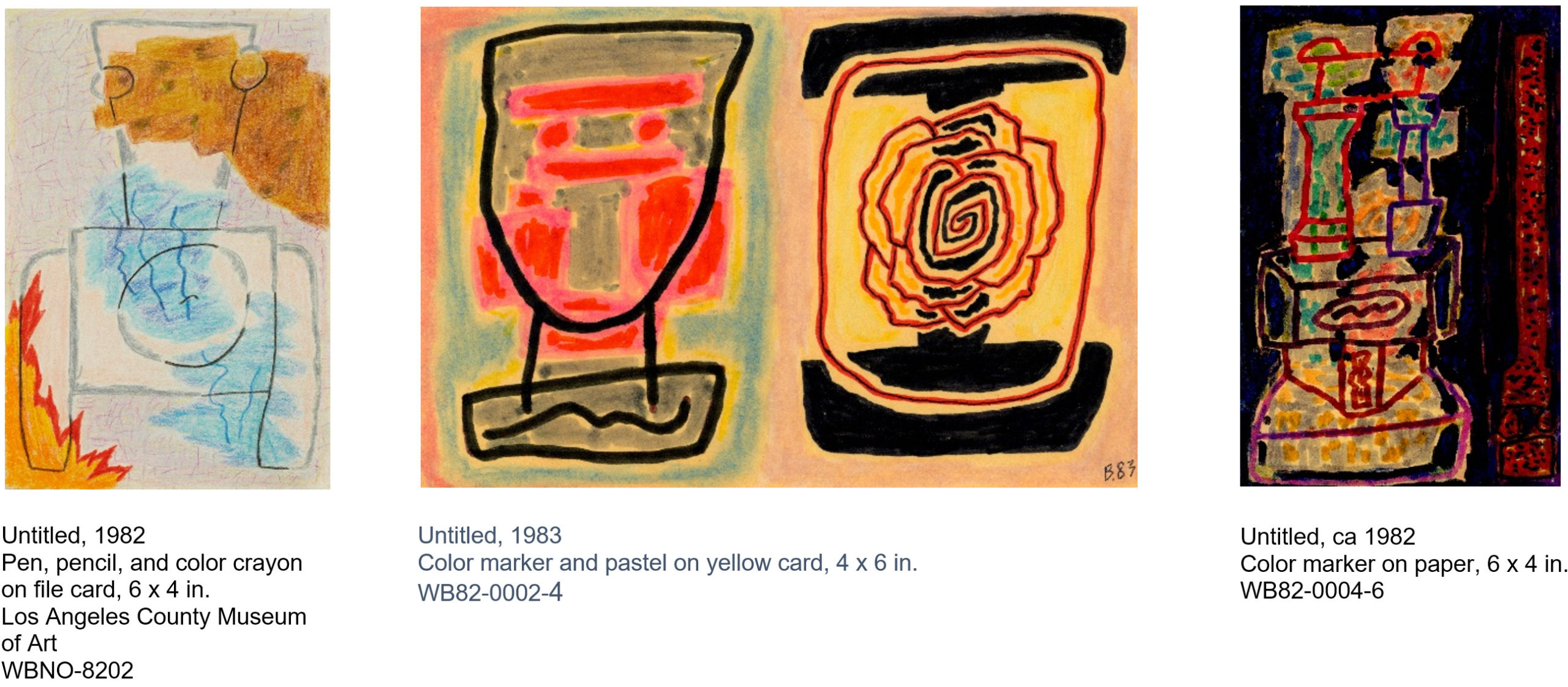
1990’s
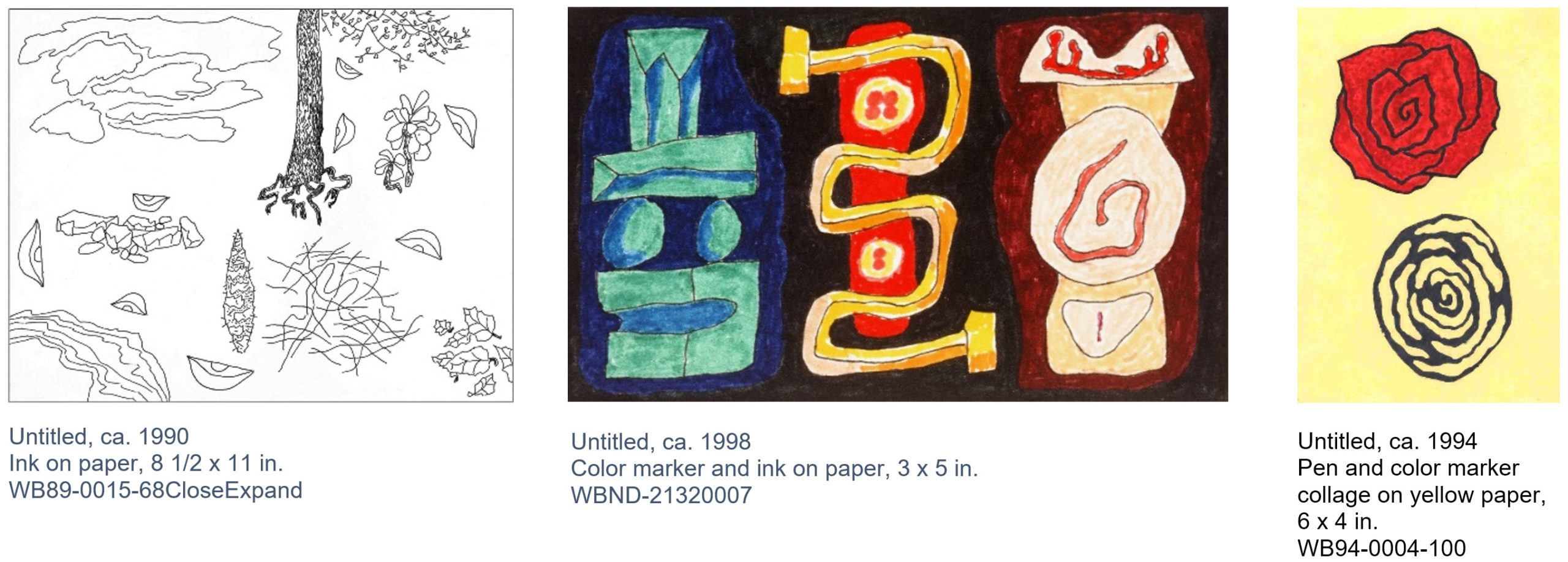
2000’s
